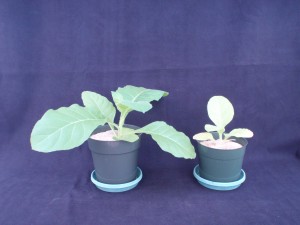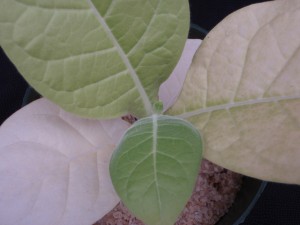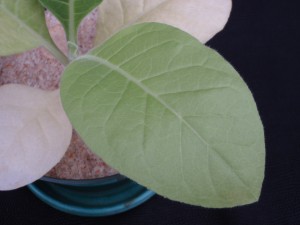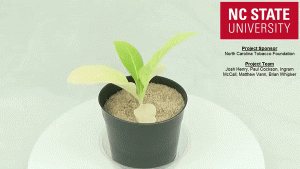From the Field-Agronomy Notes
go.ncsu.edu/readext?419824
en Español / em Português
El inglés es el idioma de control de esta página. En la medida en que haya algún conflicto entre la traducción al inglés y la traducción, el inglés prevalece.
Al hacer clic en el enlace de traducción se activa un servicio de traducción gratuito para convertir la página al español. Al igual que con cualquier traducción por Internet, la conversión no es sensible al contexto y puede que no traduzca el texto en su significado original. NC State Extension no garantiza la exactitud del texto traducido. Por favor, tenga en cuenta que algunas aplicaciones y/o servicios pueden no funcionar como se espera cuando se traducen.
Português
Inglês é o idioma de controle desta página. Na medida que haja algum conflito entre o texto original em Inglês e a tradução, o Inglês prevalece.
Ao clicar no link de tradução, um serviço gratuito de tradução será ativado para converter a página para o Português. Como em qualquer tradução pela internet, a conversão não é sensivel ao contexto e pode não ocorrer a tradução para o significado orginal. O serviço de Extensão da Carolina do Norte (NC State Extension) não garante a exatidão do texto traduzido. Por favor, observe que algumas funções ou serviços podem não funcionar como esperado após a tradução.
English
English is the controlling language of this page. To the extent there is any conflict between the English text and the translation, English controls.
Clicking on the translation link activates a free translation service to convert the page to Spanish. As with any Internet translation, the conversion is not context-sensitive and may not translate the text to its original meaning. NC State Extension does not guarantee the accuracy of the translated text. Please note that some applications and/or services may not function as expected when translated.
Collapse ▲Tobacco Research Update: Nitrogen Deficiency of Tobacco
In this tobacco research update, we highlight the symptoms of nitrogen deficiency. These images are part of a project supported by the North Carolina Tobacco Foundation to develop a web-based diagnostic key for the identification of nutrient disorders of tobacco.
By far, nitrogen (N) is the most widely applied nutrient for plant growth. It should come as no surprise, that symptoms of nitrogen deficiency are readily induced in plants.
In tobacco, one of the first indicators of limited N is slowed growth (Fig. 1). Plant growth stalls and leaf expansion does not occur. Visual symptoms of N deficiency quickly follow. When N supplies are limited, the plant will reallocate N from the lower leaves to the upper leaves, due to the fact that N is a mobile element. This is the reason why symptoms initially develop on the lower foliage.

Figure 1. Slowed or stunted growth is often the first visual symptom of a nitrogen deficiency. Slowed growth begins before leaf symptomology is visible.
©2016 Forensic Floriculture
The initial symptom of N deficiency is a paler green coloration of the lower leaves (Fig. 2). The progression to more advanced symptoms readily occurs when N is unavailable to the plant. Pale green leaves will begin to change to a light yellow, that becomes progressively more bleached over time (Fig. 3). These symptoms may be observed in the attached continuously rotating image (Fig. 4, click image to play video). Ultimately, these bleach-yellow leaves will turn brown (senesce) and fall off the plant.
We would like to express our appreciation to the North Carolina Tobacco Foundation for supporting this project. We will be providing updates as symptoms progress over the course of the nutrient disorder induction phase of the experiment.
Key Contact: Dr. Matthew Vann, Department of Crop and Soil Science mcvann@ncsu.edu
Contributing Authors: Josh Henry, Paul Cockson, Matthew Vann, and Brian Whipker
Funding Source: North Carolina Tobacco Foundation
Project Team: Josh Henry (NC State M.S. student in Horticultural Science), Paul Cockson (NC State B.S. student in Agroecology), Ingram McCall (Research Technician in Horticultural Science), Rhonda Conlon (Extension IT at NC State), Matthew Vann (Tobacco Extension Specialist, Dept. of Crop and Soil Science), and Brian Whipker (Professor of Floriculture and Plant Nutrition in Horticultural Science).

Figure 3. The progression of symptoms can easily be observed on this burley tobacco plant. With this advanced stage of symptoms, the initial pale green coloration is seen on the upper leaves, that gives way to a yellowish-green coloration on the next leaf down. As symptoms progress further, the leaf turns yellow, which is visible with the third leaf from the top. Ultimately the leaf turns a bleached-yellow coloration, as seen on the lowest leaf. The final stage of development occurs when the leaves senesce and fall off the plant.
©2016 Forensic Floriculture




